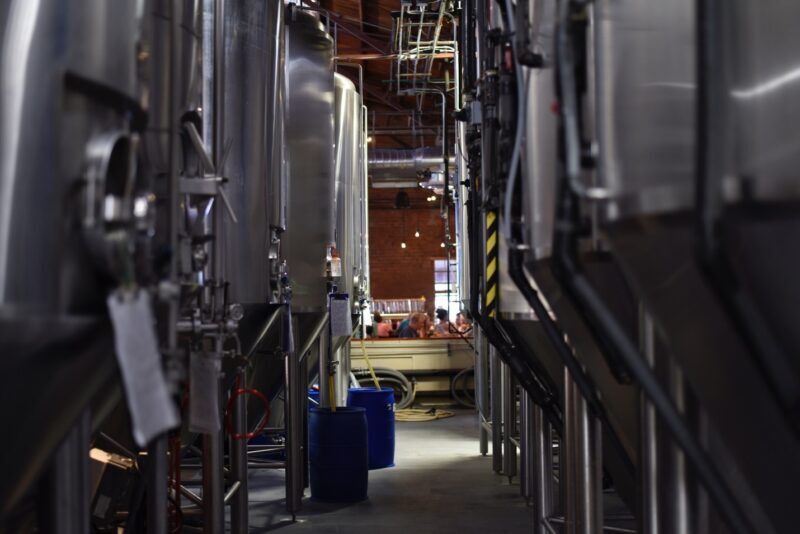There are several steps to becoming a micro-brewery, from identifying your niche to creating a business plan. You can also get a license and GMPCB to start your business. This article will walk you through all these steps.
Finding a niche for a micro-brewery
When you start a micro-brewery, it is important to find a niche. You need to find a niche that fits your vision and is easily accessible to your target demographic. If your microbrewery will be a destination for locals and visitors, find a niche that serves those people.
The craft beer market is a lucrative one. Craft beer consumers are increasingly sophisticated and willing to pay a premium price for their craft beer. They can also spend more on complementary items. Additionally, many of these consumers are health conscious. As a result, you can capitalize on this by showcasing healthy snack products and fresh foods. Besides beer, craft beer brands can also sell food and other complementary items. This will allow you to create a niche and capitalize on the growing craft beer market.
When you find a niche, you will find people who share the same goals and aspirations. These people will be willing to support you and your microbrewery. This way, you will build a community. Using this network, you can grow a business and earn a living. If you do this right, it will be profitable, and your microbrewery will grow with your customers and your brand.
One thing to keep in mind when starting a microbrewery is that the market is very small. If you are marketing your product to the general public, you’ll be competing with companies like Bud Light and Coors Light. You will need to create a niche market where you will be unique. Your target market would be beer enthusiasts, not mainstream beer drinkers.
Building a business plan
Developing a sound business plan for a micro-brewery is essential for success. This document should outline the overall business strategy, how you will operate, and your goals and objectives. This is the place to include what machinery you will need to buy, as well as the recipes that will set your business apart. Having a detailed schematic from a company like ABS Commercial will help demonstrate that you are well prepared and professional. It will set the minds of your investors at ease.
If you are unable to raise the necessary capital to open a brewery, you can borrow money from banks and other financial institutions. If you do not have the capital to start a brewery, building a business plan for microbreweries is a viable option.
A good microbrewery business plan should include an executive summary, an operational plan summary, and detailed financial analysis. If you are planning to raise capital from investors, the most important section of your plan will be the financial plan. You will need to calculate your start-up costs and overhead, and project your revenue to prove your business potential. Then, you will need to develop a marketing plan and implement social media.
Your business plan should also outline your target market and competitors. Identifying gaps in the market is crucial in determining the scope of your operation. Describe how you will provide better customer service than your competitors and explain how your business will address these gaps.
Using a business plan is essential in defining your goals but remember to be thorough and comprehensive. There is no substitute for thorough research and analysis. You will want to be able to explain your business in an easy-to-read and easy-to-understand manner.
Getting a GMPCB
If you want to start a micro-brewery, there are many things you must do before you start brewing. One of the first things to do is to register with the FDA. This is free and necessary to start brewing beer legally.
Once registered, you must comply with Good Manufacturing Practices (GMPs) for craft brewers. These GMPs are federally mandated standards for breweries, and they cover everything from sanitation to employee hygiene. Click here for more information about Good Manufacturing Practices. Getting a GMPCB is important to keep your beer safe and tasty.
The next step is to write a business plan. Your business plan should include information about your brewery’s mission statement, key people, and suppliers. It should also include a financial forecast, including the first five years.
Your plan should include estimates of revenue and expenses so that you can justify the amount you need to invest. You should also include a detailed description of the beer you plan to sell, as well as a sample menu of your beer.
Once you have your business plan written down, you will need to determine the competition in your area. There are likely already many other microbreweries in your area. While they are friendly and may help each other, microbreweries are still competitors. If you do not plan for interruptions in the business, you may not be able to compete with the other breweries in your area.
Despite their small size, microbreweries can make a profit. In 2014, the average profit margin for a microbrewery was 9.1%. It can take up to a year before your microbrewery begins to turn a profit, depending on the type of microbrewery.
This profit margin may be wiped out by fluctuations in grain costs. The key to success is reinvesting your profits to reach more consumers and differentiate yourself from your competition.
Permits and licenses
The initial application for a brewery includes a number of required forms and documents. The applicant will need a business license, a Federal Tax ID, and a Certificate of Authority Permit number.
Individuals, partnerships, and corporations will also need to provide information about the principals and partners. In addition, the application for a micro-brewery will need a lease that allows for renewals and will list the parties who will split the profits and losses.



